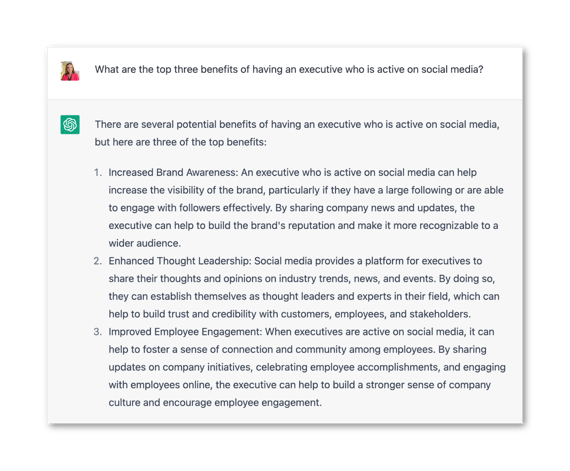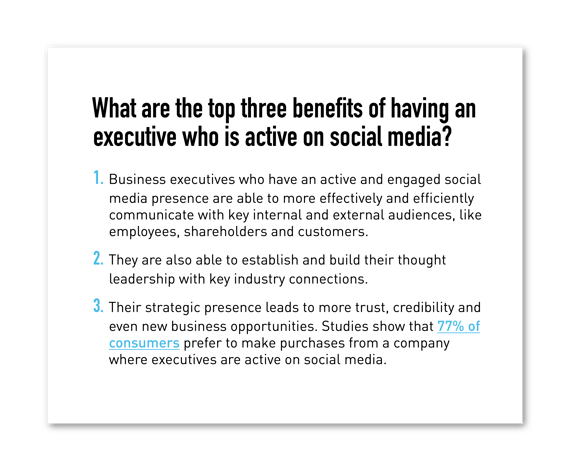There’s a reason the “R” in PR stands for relations. Relationships are the foundation of the industry, and as artificial intelligence tools improve, some fear AI will fundamentally change the industry. While some predict AI will replace content creators, the audience on the receiving end, humans, isn’t changing. That means the human element of PR is necessary.
As ChatGPT dominates conversations, everyone from students to pastors are testing how the new chatbot could assist in the creation of content. I was just speaking to a group of executives about the importance of maintaining active social media accounts when, during a break, one of them asked ChatGPT to write a LinkedIn post. While the post was accurate, it wasn’t compelling or engaging. It was missing the executive’s personal perspective and insight.
Putting AI To the Test
We put AI to the test to see how it compares to what an expert human writer would create. We kept it simple by asking, “What are the top three benefits of having an executive who is active on social media?”

While, overall, the facts are correct, the answer is extremely long. Using this copy in a thought leadership article of a social media post misses the mark on adding the heart and feelings or what you are trying to get across.
Risks of AI
While AI can search the internet and accurately quote reputable sources, what’s to say it won’t cite something that’s a few years old and outdated? Without a human, who understands nuance and audience, fact-checking, you could be unintentionally publishing something that isn’t up to date or worse, is off-putting to your ideal audience. Depending on the situation, the damage to your brand could be catastrophic. Additionally, if you find yourself in a crisis when the stakes are the highest, a computer can’t predict the fears and anger of an audience.
Officials at Vanderbilt University Peabody College had to answer to students after using AI to craft a message about safety following a shooting at another university. Students were outraged and said the message lacked empathy and even had a mistake in it.
Without understanding how the audience feels, AI can’t understand the empathy and emotion required to communicate a delicate message in an email, social media post, press release or thought leadership article. With a little editing and using insight and feedback from our clients whose social media we manage, our team came up with what we believe are the benefits of having an executive who’s active on social media.
Rewards of AI
The pressure for businesses and leaders to keep up with the constant demand of creating content can seem overwhelming. Without an abundance of resources, it is tempting to turn to AI to help save time and money.
Using AI to assist people, not replace them, is a place to start. Typing in some prompts can give AI enough information to craft a basic, unemotional, fact-based message. Then, review and fact-check it and insert your own voice and original thoughts before sharing it with internal or external audiences. Creating content for people requires people.
As we look at ways business leaders or PR teams can become more efficient in creating content, AI can assist. For people who aren’t confident in their technical writing abilities, AI can help gather facts, like a search engine can, to move the writing process forward. My recommendation is to use it as a tool to help, but don’t let it be the only step in your content creation process.
Where We Go From Here
Building a brand and a reputation takes time and energy. While technology can make that important work more efficient and even open our eyes to new ways of thinking, trusting your brand with AI alone can be dangerous. Keeping your audience at the center of your messaging strategy and fostering authentic relationships is why PR approaches that are people-powered and people-focused will continue to thrive. My prediction is that AI will help PR professionals, but it will never replace the “R” in public relations.


